***
A little about Stained Glass:
Its origins as an art form began in the Middle Ages, when
churches and communities began using it as a way to tell stories and relay
Biblical messages to a populace that was mostly illiterate.
I love how artists were like, "Hmmm, how can we convey the message of the Gospel to these illiterate people? Oh, I know, we can make Psalters and mend the Gospels with gold and precious stones!" And then as though that wasn't special enough, they then decide to make bigger than life illustrations out of glass! I think their dedication to preach the Gospel is awe-inspiring and something that we should all learn from today! So often we are so busy trying to make Jesus look cool, that we forget to simply tell the story of Jesus and trust that he will bring people to himself. All we have to do is be faithful be retelling the story! Okay, off of my soap box now.
Once the Gothic Period began, stained glass went from displaying rather simple figures to storytelling with very elaborate and complex iconography (that only a hand full of experts can interpret today). Stained glass in this era depended primarily on reds and blues, while previous eras used mostly pure whites, yellows, and greens.
Another distinction is that the angles, perspective, and volume of the illustrations became more evident and dramatic. The subject was not subservient to the building's structure or architecture, but rather pictorial and able to stand on its own.

Romanesque Style Windows
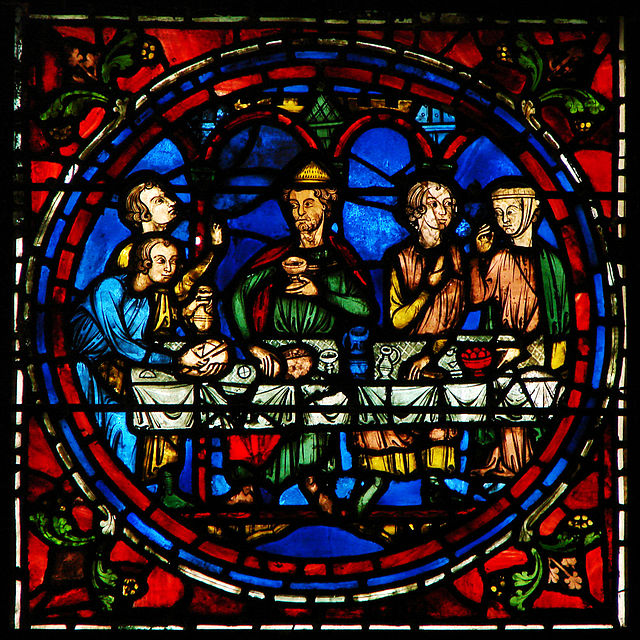
13th Century Gothic Window from Chartres Cathedral
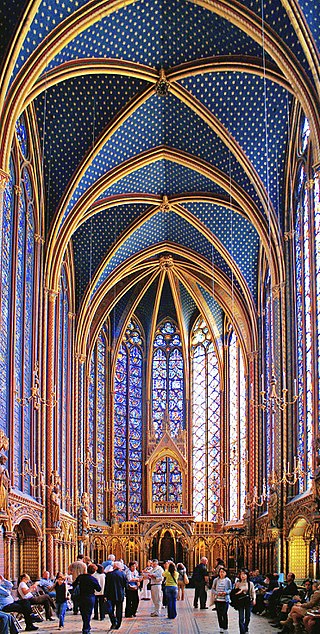
Sainte Chapelle (France)

Bishop's Eye at Lincoln's Catherdral (England)
*Glass Designs became more daring, implementing designs like the circular form above.
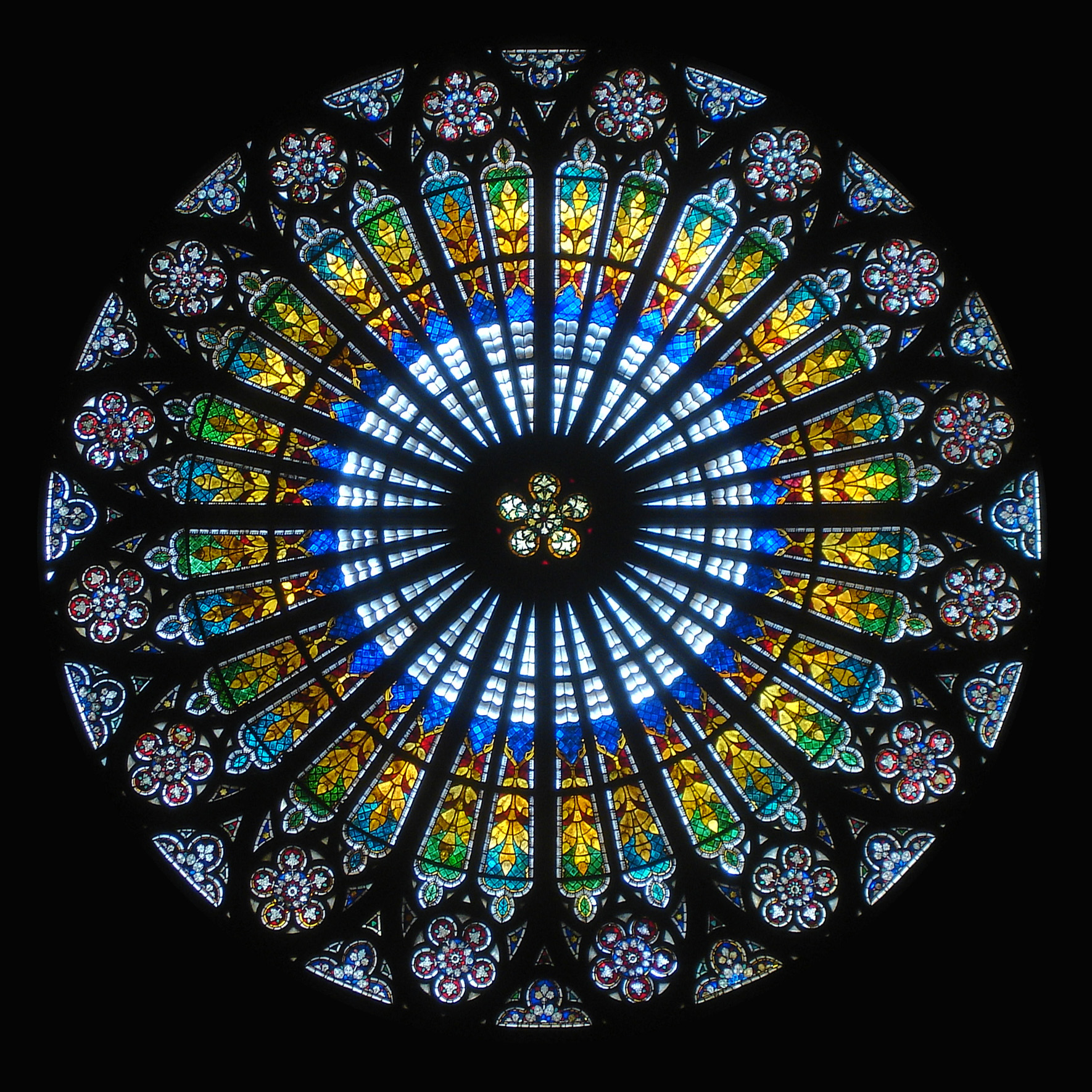
St. Strasbourg Cathedral
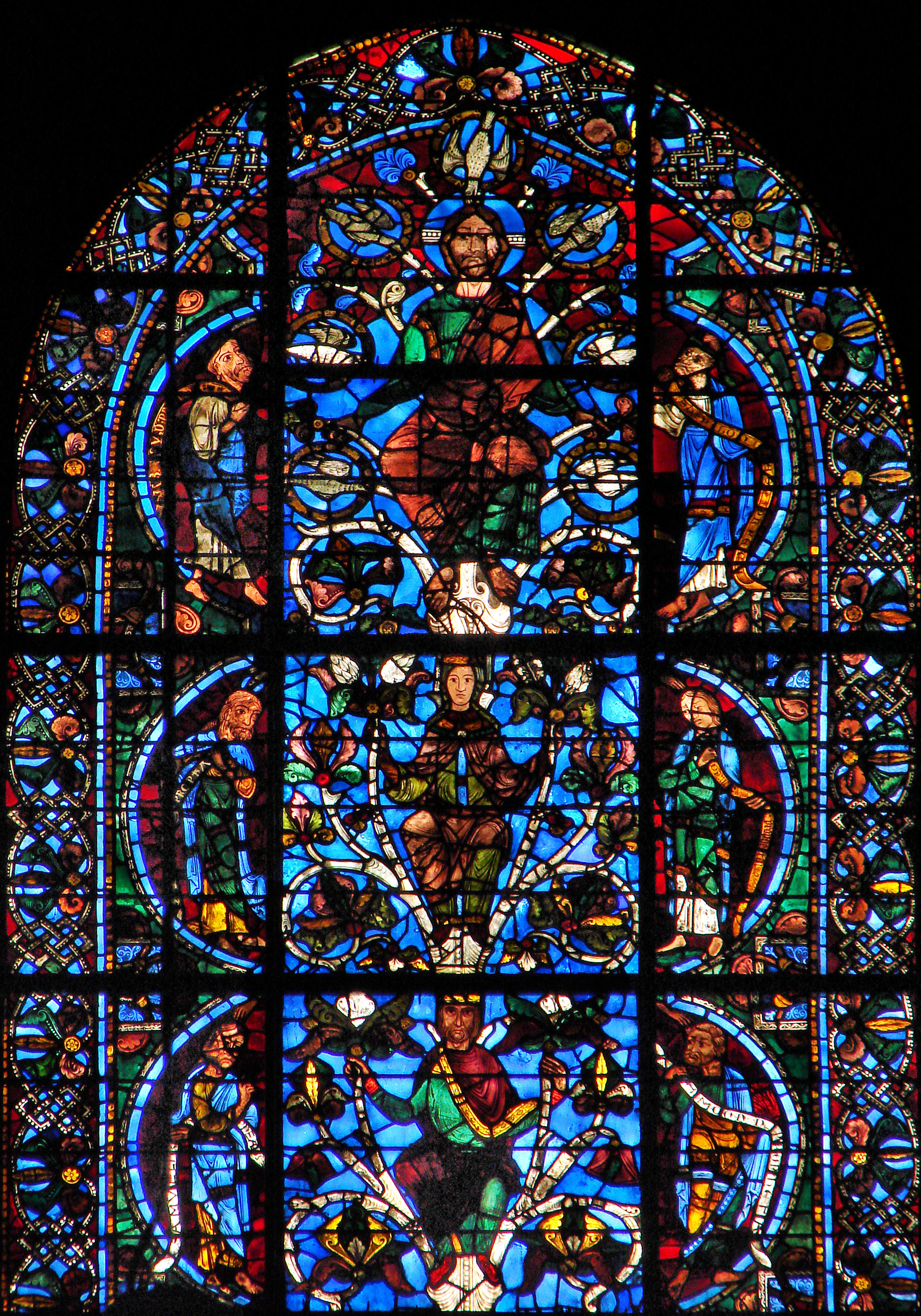
Chartres- Jesse Tree
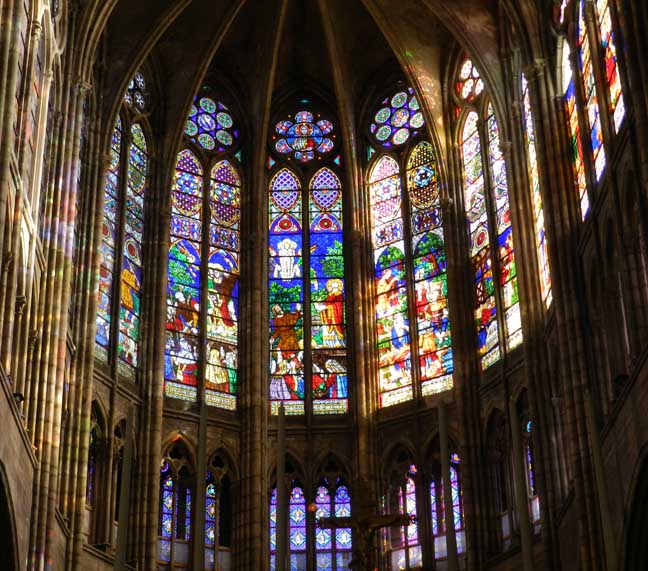
St. Denis Basilica

Chartres Cathedral

Late Gothic (early 20th Century)- St. Maurice's Church in Czech Republic
Summary/Main Characteristics of Gothic Stained Glass Windows:
- Decorative borders and foliage become more formalized
- Naturalistic and Volumetric forms
- Flashed Glass technique introduced (allowing for color gradations in a single piece of glass)
- Ability to depict more complex Biblical narratives and stories
- Elaborate stone window tracery
Late Gothic Glass Making
- Foliage becomes more loose and warmer colors are used
- Images depicting secular activities (masonry and glazing) are displayed next to sacred imagery.
- Artists begin to seek secular commissions (moralizing roundels or heraldic panels) in order to make a living.
Interesting Facts:
- Romanesque and Early Gothic windows were divided into sections by heavy metal frames called ferramenta. However, when Gothic architecture took over, they became more ornate, windows grew larger, and illustrations became more filled with light, which made them take on a different form. They then were divided into sections by vertical shafts and tracery of stone.
- "Although stained glass was widely manufactured, Chartres in France was the greatest glass producing center, with unrivaled quality".
- Romanesque and Early Gothic windows were divided into sections by heavy metal frames called ferramenta. However, when Gothic architecture took over, they became more ornate, windows grew larger, and illustrations became more filled with light, which made them take on a different form. They then were divided into sections by vertical shafts and tracery of stone.
- "Although stained glass was widely manufactured, Chartres in France was the greatest glass producing center, with unrivaled quality".
Sources:
https://www4.uwm.edu/letsci/arthistory/StainedGlass/history.cfm
https://www4.uwm.edu/letsci/arthistory/StainedGlass/history.cfm
http://en.wikipedia.org/wiki/Stained_glass
http://stainedglass.org/?page_id=169
https://www.youtube.com/watch?v=9727p6ozlYo
***

Shekinah,
ReplyDeleteAlthough you said you were on a soap box I really appreciated how art during that time simply told a story! I think we forget sometimes that art can be just as great of a communicator as our words. Great post!
I like your initial soap box of just "being faithful and retelling the story." I think that is a fun way to see the windows, and in many ways they say tell the story beautifully. I like your statement, "The subject was not subservient to the building's structure or architecture, but rather pictorial and able to stand on its own," but just want it explained with an example. Same with your pictures, I would just like you to explain one or two of them a bit more so we can understand more fully what we are looking at. Very nice points at the end of the blog, that gives us a nice overview of the era, and stained glass, very helpful.
ReplyDelete